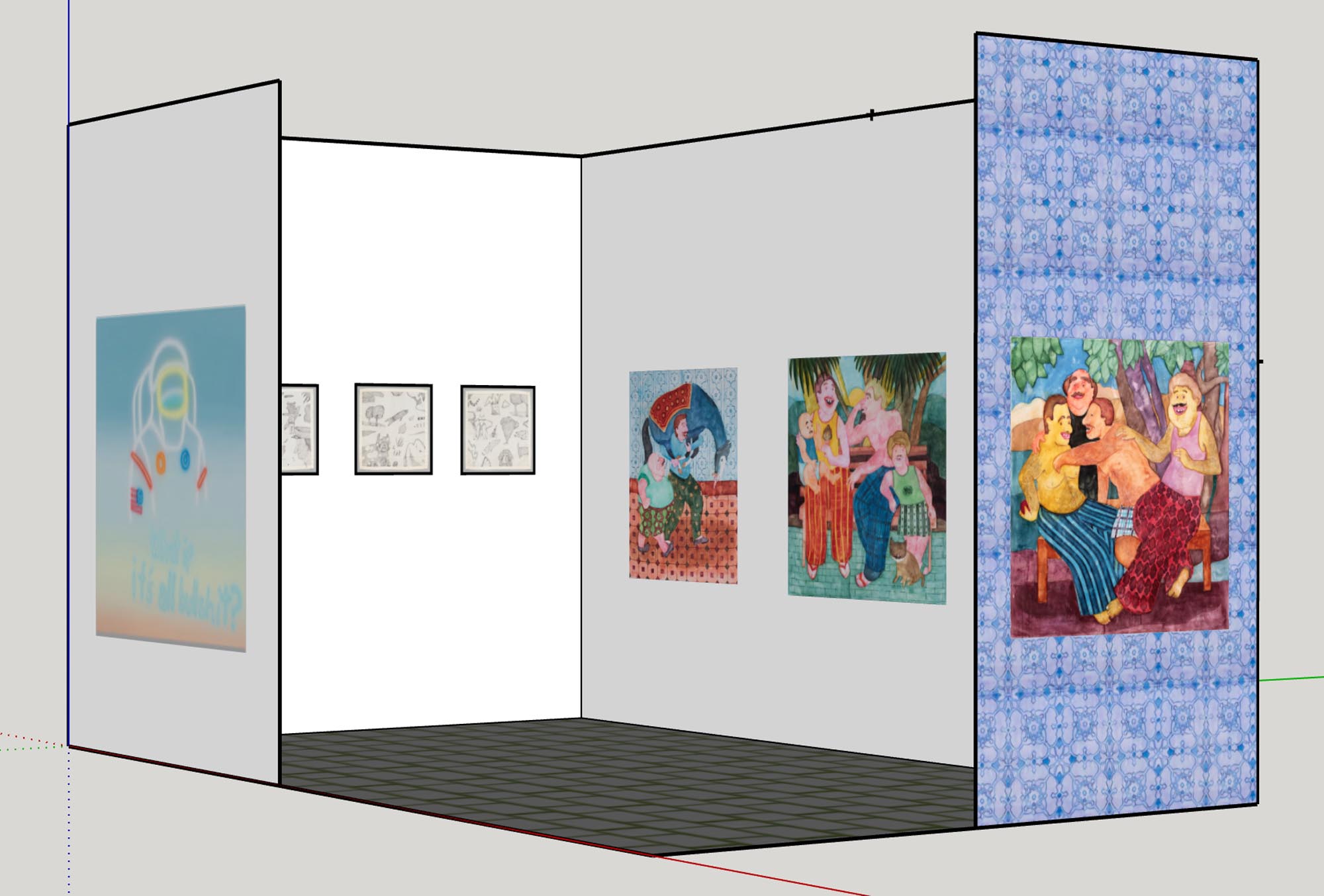
Western Exhibition is thrilled to present new work by Dan Attoe and Orkideh Torabi and work from the 1970s by Julia Schmitt Healy at the 2019 NADA Miami fair.
NADA Miami
1400 North Miami Avenue, Miami, FL 33136
VIP Preview by Invitation: Thursday, December 5, 10am–12pm
Opening Preview by Invitation: Thursday, December 5, 12–2pm
Open to the Public
Thursday, December 5, 2–7pm
Friday, December 6, 11am–7pm
Saturday, December 7, 11am–7pm
Sunday, December 8, 11am–5pm
Dan Attoe’s paintings depict natural wonders—waterfalls, beaches, mountains, rocky cliffs, over-sized forests—populated by tiny figures spouting even tinier diaristic missives, painted in silver and culled from the artist’s stream of consciousness. The miniature humans disrupt the grandeur of nature with their small stature and utterances. His drawings share the same concerns but inverted—the phrases and disconnected images are larger and often cartoonish, creating small-scaled narrative vignettes. Attoe makes a small drawing every day that he keeps for himself—slightly larger drawings and paintings expand upon this practice. John Motley observes in The Portland Oregonian, “Multiple drawing styles reinforce the varying perspectives on youth and childhood, from pure, storybook fantasy to a less-innocent complexity, where fear and sexuality mingle.” Attoe said of his work, “The landscape can be enjoyed for its beauty, and the disparity between it and the figures, but it also exists in service to these contemporary people in funny or ordinary clothing saying everyday things about e-mails or engaging in interpersonal clumsiness.”
Julia Schmitt Healy’s early work — ballpoint on handkerchief drawings and tufted watercolor on muslin pieces that exist somewhere between painting, pillows and soft sculpture — embodies the Chicago Imagist scene in the early 70s as she explored images and iconography from the news, religions, mass media and her travels. Symbolic surrealism is present throughout the work — pieces are tactile, stuffed, quilted and finished off with zits, bandages, hair, and buttons. There are connections to real people, places and things present within Schmitt Healy’s three dimensional psychedelic cartoons of sorts, in which faces have tufts for eyes and threads of worm-like fibers for facial hair. Chicago artist and collector John Maloof, who introduced the gallery to Schmitt Healy’s work, notices the tension and unique spirit present throughout the pieces: “Julia’s playful, yet often grotesque work strikes a perfect nerve where art and absurdity intersect. Who thinks up Teenage Car with Pimples?” Similarities to well-known Chicago Imagists abound in these panels: Barbara Rossi’s fabric works come to mind (a medium which Schmitt Healy used before Rossi); some hair-dos inspired from a trip to Africa are reminiscent of Christina Ramberg; and her puffy cars recall the puffy clouds of Roger Brown.
Orkideh Torabi’s paintings depict caricatures of men — particularly men who enjoy and benefit from social freedoms that women, in many cultures, are forbidden or discouraged from engaging in. Taking art historical cues from portrayals of the figure in landscape in the Western Canon, Torabi’s men are seemingly oblivious to their coveted social freedom. Rendered with simple button-eyes, gnarled noses, and alien skin, her intentionally humorous figures are stuck in an emasculated state of being. She banishes women from her paintings altogether, crafting scenes that offer an eerie parallel to daily life in patriarchal cultures. Without women, the men are left to coddle their baby boys, care for each other at public baths, and engage in intimate conversations amongst themselves. Torabi uses fabric dye on stretched cotton, a batik-like technique that has become her signature, to depict cartoonish contemporary men against vivid patterns, designs that are influenced by Persian manuscripts and miniatures, both integral parts of Iranian culture since the 13th century. These small yet highly detailed illustrations usually depict warrior men completing tasks as gazing women watch the active heroes in wonder from the sidelines. In the new series of paintings, Torabi moves these backgrounds into the foreground shapes of her men’s shirts, pants and blankets. Custom-designed, patterned wallpaper will be installed behind the paintings to further envelop the viewer in color and pattern. By juxtaposing her contemporary observations with such traditional imagery, Torabi makes explicit that the past and present become interwoven in the fabric(ated) world of her making.